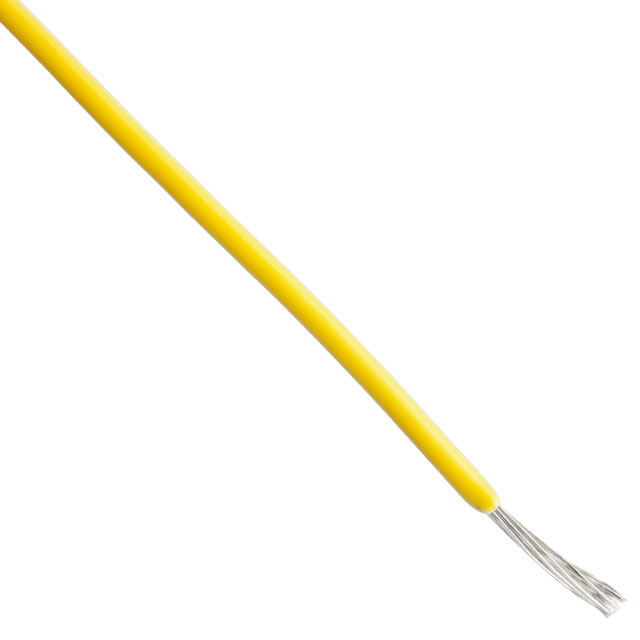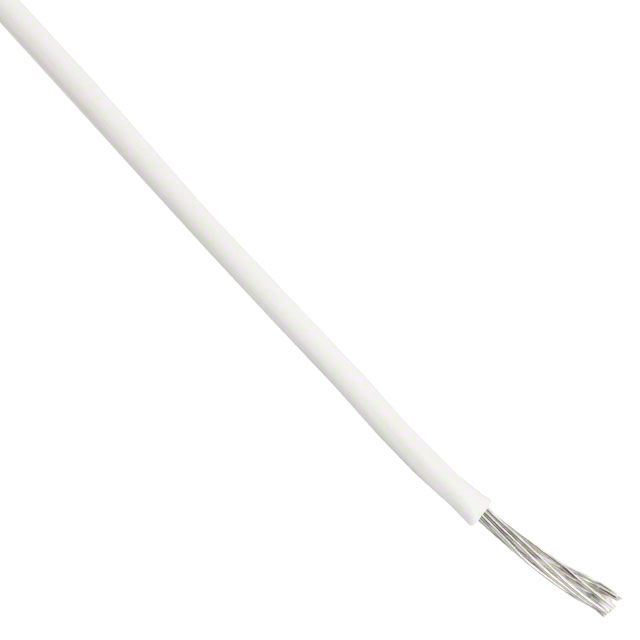
Patient Monitoring System Electronics: AFEs, Isolation, Networking & Alarms
August 18 2025 
Inquiry
Global electronic component supplier ERSAELECTRONICS: Rich inventory for one-stop shopping. Inquire easily, and receive fast, customized solutions and quotes.
QUICK RFQ
ADD TO RFQ LIST
One box, many biosignals. Mission: capture clean data, alarm correctly, interoperate with the hospital network—and pass EMC without breaking a sweat.
One box, many biosignals. Mission: capture clean data, alarm correctly, interoperate with the hospital network—and pass EMC without breaking a sweat.
.png?x-oss-process=image/auto-orient,1/quality,q_70/format,webp)
1) System architecture & form factors
- Bedside monitors: integrated screen + parameter boards; AC mains with BF/CF modules on isolation islands.
- Transport monitors: battery-backed, ruggedized I/O; quick-release patient cables; low-power AFEs.
- Modular platforms: plug-in parameter pods (ECG/SpO₂/NIBP/IBP/CO₂); hot-swappable; common backplane for power/data.
- Central station: trending, alarm escalation, remote settings; gateway to EMR.
2) Signal chains by parameter
| Parameter | Front end (AFE) | Sampling / bandwidth (typ.) | Notes |
|---|---|---|---|
| ECG | Inst. amp → DRL → anti-alias → ADC | 250–1000 sps; ~0.05–150 Hz | Lead-off detect; defib protection; pace detect |
| RESP (impedance) | Low-amp AC injection → demod → filter | ~25–100 sps | Inject μA-level AC via ECG leads; isolate path |
| SpO₂ | LED driver (red/IR) → photodiode TIA → ADC | ~200–1000 sps | Ambient rejection; motion resilience; LED calibration |
| NIBP | Pressure sensor + IA → ADC | ~100–500 sps | Pump/valve control; oscillometric algorithm |
| Temp | RTD/thermistor bridge → precision ADC | Low rate | Linearization; patient isolation if applied |
| IBP (optional) | Bridge transducer → IA → anti-alias → ADC | 250–1000 sps | Heated transducers; catheter kits vary |
| EtCO₂ (optional) | IR source → detector AFE → ADC | ~100–200 sps | Mainstream or sidestream; sample line management |
3) AFE/ADC design details
.png?x-oss-process=image/auto-orient,1/quality,q_70/format,webp)
- ECG: high CMRR instrumentation amp; right-leg drive; high-pass for baseline wander; protect against defib pulses (gas tubes/TVS/resistors per design guide).
- SpO₂: programmable LED current; ambient subtraction; TIA with low input bias and stable GBW; per-probe ID/coefficients.
- NIBP: noise-aware routing near pumps/valves; differential sensing to resist EMI; oversampling + digital filtering.
- ADC: 16–24-bit for low-level analog (ECG/IBP/temp); synchronize channels for derived parameters (RESP from ECG, etc.).
4) Isolation strategies (BF/CF)
Partition patient-applied modules behind isolation barriers with isolated DC-DC and digital isolators. Choose BF or CF based on contact type; respect leakage limits and creepage/clearance for your PCB stack-up.
.png?x-oss-process=image/auto-orient,1/quality,q_70/format,webp)
- Isolate ECG/SpO₂/IBP boards from mains; NIBP pump electronics may share system ground but isolate pressure transducer path if applied.
- Use reinforced insulation where required; validate leakage across temperature/humidity and aging.
5) Power tree & display
- AC-DC medical PSU + DC rails for logic, AFEs, backlight; optional battery for transport/ride-through.
- Supervisors and brownout logs protect trend data; backlight dimming for ICU lighting policies.
- Fans vs fanless heat spreaders—consider acoustic environment and cleaning workflow.
6) Alarms, trends & usability
.png?x-oss-process=image/auto-orient,1/quality,q_70/format,webp)
- Conform to IEC 60601-1-8: distinct tones (high/med/low), visual indicators, acknowledge/mute behavior with time limits.
- Smart alarm delays and plausibility checks (e.g., ECG loss before arrhythmia) reduce nuisance without masking true events.
- Trending: minute-to-days retention; export to central station; bedside strips for events (arrhythmia, desat, hypertensive spikes).
- UI for gloves, night mode, and quick lead/cuff status; color coding by parameter.
7) Networking & interoperability
.png?x-oss-process=image/auto-orient,1/quality,q_70/format,webp)
- Ethernet (PoE optional) and/or Wi-Fi for mobility; VLAN segmentation recommended.
- Protocols vary by deployment: gateway/central station often bridges to hospital HL7/11073 or vendor middleware—keep data models clean and time-synced (NTP).
- USB service port for logs/updates; audit exported events with integrity checks.
8) Cybersecurity & update strategy
- Secure boot; signed updates (offline and OTA via gateway); SBOM tracking; role-based access for clinical vs service menus.
- Encrypt PHI at rest and in transit; wipe/transfer modes for decommissioning.
- Event/audit logs with tamper-evident storage; time-stamped with secure RTC.
9) PCB layout & EMC practices
.png?x-oss-process=image/auto-orient,1/quality,q_70/format,webp)
- Zone placement: quiet AFEs away from switching supplies and backlight drivers; short guarded traces to ADCs.
- Filter/TVS at cable entries; common-mode chokes on USB/Ethernet; chassis bonding with defined return paths.
- Validate with worst-case harness lengths and patient cables; simulate incoming ESD/EFT paths.
10) Compliance mapping (IEC/ISO)
| Topic | Standard | Engineering artifact |
|---|---|---|
| Basic safety | IEC 60601-1 | Schematics, creepage/clearance, leakage test plan/results |
| EMC | IEC 60601-1-2 | Filter/shield plans, test matrix, immunity recovery behavior |
| Alarms | IEC 60601-1-8 | Priority tables, sound patterns, usability validation |
| Multiparameter monitor | IEC 60601-2-49 | Performance tests, labeling, essential performance |
| ECG | IEC 60601-2-27 | Defib protection, pace detect, bandwidth verification |
| SpO₂ | ISO 80601-2-61 | LED/PD performance, motion/ambient tests |
| NIBP | ISO 80601-2-30 | Oscillometric accuracy, cuffs/hoses verification |
| Respiratory gas (EtCO₂) | ISO 80601-2-55 | CO₂ accuracy, response time, alarm checks |
| Thermometry | ISO 80601-2-56 | Accuracy, drift vs temp range |
| Software | IEC 62304 | SRS, risk class, verification/traceability |
| Usability | IEC 62366 | Use-related risk files, formative/summative tests |
| Risk management | ISO 14971 | Hazard analysis, FMEA/FMEDA, residual risk eval |
| QMS | ISO 13485 | DHF/DMR, change control, CAPA linkage |
Which “particulars” apply depends on your feature set; align your essential performance and tests accordingly.
11) Risk analysis (hazards → mitigations)
| Hazard | Cause | Mitigation |
|---|---|---|
| Incorrect ECG reading | CMRR loss, lead reversal | High-CMRR IA, DRL integrity, lead-reversal detect, calibration checks |
| SpO₂ false desat | Motion/ambient light | Red/IR ratio plausibility, ambient subtraction, averaging with limits |
| Missed NIBP alarms | Pump/valve failure | Self-test valves/pumps, pressure rate-of-change checks, backup cycle |
| Leakage exceedance | Isolation fault | Robust barriers, hipot/leakage at production & service intervals |
| Data loss | Power fail mid-write | Transactional trend writes to FRAM/Flash; supervisors; hold-up energy |
| Unauthorized change | Unsecured service menu | Role-based access, signed configs, audit logs |
12) Sample BOM highlights
| Function | Component class | Selection cues |
|---|---|---|
| ECG/RESP | Inst. amp, DRL amp, protection, 24-bit ADC | CMRR, input noise, defib withstand, lead-off |
| SpO₂ | LED driver, photodiode TIA, ADC | Current range, noise density, ambient rejection |
| NIBP | Pressure sensor, IA, pump, valves | Drift, hysteresis, lifetime cycles, acoustic noise |
| Temp | RTD/thermistor AFE, precision ADC | Linearity, excitation stability |
| Isolation | Digital isolators, isolated DC-DC | CMTI, creepage, leakage current limits |
| Processing | MCU/SoC + display | RTOS resources, graphics accel, power |
| Networking | Ethernet/Wi-Fi modules | Security features, EMC, driver support |
| Storage | FRAM/Flash/eMMC | Trend/event endurance, power-fail safety |
| Audio | Beeper/amp | Loudness profile per alarm priority |
| Security | Secure element/TPM | Key storage, X.509, lifecycle states |
13) Manufacturing QA, calibration & service
- ICT/FCT: ECG gain/bandwidth/pace detect; SpO₂ LED/PD loop; NIBP pump/valve timing; temp accuracy checks.
- Calibration: ECG lead-off thresholds; SpO₂ LED current/PD baseline; NIBP zero/span; temp coefficients stored to NVM.
- Acceptance: Alarm tests (60601-1-8 patterns/priorities), leakage/hipot, EMC spot checks on golden units.
- Service: Cable/connector life, battery capacity (if transport), isolation re-tests at intervals.
14) Related guides
- Read the full Ventilator electronics guide
- Read the full IVD electronics guide
- Read the full Wearable Health electronics guide
Building a monitor platform? Contact Ersa for AFEs, isolation, displays, power, and alternates.
Related Articles
- ·ICD Electronics: Tiny Lightning, Relentless Reliability
- ·Smart Pill Dispensing Electronics: From Missed Doses to Mission Control
- ·Electrosurgery Electronics: Turning RF Into a Surgical Superpower
- ·Endoscopic Imaging Electronics: Tiny Optics, Big Picture
- ·X-ray & CT Electronics: From Kilovolts to Reconstruction
- ·MRI Core Electronics: From Quench to K-Space
- ·IVD Electronics: Tiny Signals, Big Answers
- ·Vital Signs Monitor Electronics: Tiny Signals, Big Decisions
- ·Neurostimulator Electronics: Tiny Pulses, Big Nerves
- ·Pacemaker Electronics: Tiny Joules, Big Heart
Popular Posts












.png?x-oss-process=image/format,webp/resize,h_32)










